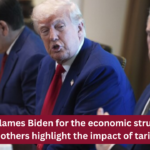Starting in 2025, Singapore’s Central Provident Fund (CPF) system will undergo one of its most comprehensive overhauls in recent years, aimed at strengthening retirement adequacy for citizens in the face of rising life expectancy and living costs.
These changes, which include revised contribution rates, account restructuring, and increased retirement limits, are expected to significantly influence how Singaporeans plan and save for retirement.
Key Changes to CPF in 2025
1. Enhanced Retirement Sum Raised to S$426,000
As of January 1, 2025, the Enhanced Retirement Sum (ERS) will increase to four times the Basic Retirement Sum (BRS), now set at S$426,000. This change enables members who set aside more savings to enjoy higher payouts under the CPF LIFE scheme.
According to CPF Board, CPF LIFE payouts for members meeting the ERS will range between S$3,080 and S$3,310 per month starting at age 65, depending on the plan chosen.
2. Special Account (SA) Closure for Members Aged 55+
Beginning January 19, 2025, the CPF Special Account (SA) will be closed for members aged 55 and above. Savings in the SA will be transferred to the Retirement Account (RA) up to the Full Retirement Sum (FRS), currently S$213,000. Any remaining funds will go into the Ordinary Account (OA).
This move is designed to streamline CPF accounts and encourage greater focus on retirement savings. Members are encouraged to voluntarily top up their RA from OA balances to benefit from the RA’s higher interest rates.
3. CPF Contribution Rates Increased for Older Workers
To support older employees in building adequate retirement savings, CPF contribution rates for workers aged 55 to 65 will be increased by 1.5 percentage points from January 2025. Employers will contribute an additional 0.5%, while employees will contribute 1% more. This adjustment aligns with Singapore’s broader strategy of promoting longer working lives and financial security for seniors.

4. Monthly Salary Ceiling Rises to S$7,400
Effective January 1, 2025, the CPF monthly salary ceiling will increase from S$6,800 to S$7,400. This allows higher-income earners to make larger CPF contributions, thereby increasing their retirement savings potential. The salary ceiling determines the portion of wages subject to CPF contributions.
According to DBS Bank, this change is part of a broader effort to help middle- to high-income workers accumulate more substantial savings by retirement age.
5. Matched Retirement Savings Scheme (MRSS) Expanded
The government is enhancing the Matched Retirement Savings Scheme (MRSS), which supports seniors with low to middle incomes. Starting in 2025:
- The annual government matching grant cap will increase from S$600 to S$2,000
- The age cap for eligibility will be removed, making the scheme available to all qualifying members aged 55 and above.
Eligible members are encouraged to top up their RA voluntarily and receive matching contributions from the government. This reform makes it easier for more Singaporeans to boost their retirement savings.
What It Means for You
These reforms collectively encourage earlier and higher CPF contributions, particularly among older workers and higher-income individuals. The closing of the SA for older members aims to simplify account structures while giving members the flexibility to optimize their fund allocations. Meanwhile, raising the salary ceiling and ERS ensures that CPF remains an effective tool for wealth accumulation throughout a working career.
Singaporeans are encouraged to review their CPF accounts, understand the new rules, and consider topping up their Retirement Accounts where beneficial. CPF’s Retirement Payout Estimator can help members better forecast their future income under CPF LIFE.
Final Thoughts
Singapore’s CPF changes in 2025 reflect the government’s response to demographic shifts and economic realities. With a focus on long-term retirement security, the adjustments provide new opportunities for both individual and national-level financial resilience. By understanding and adapting to these changes, citizens can take proactive steps toward a more secure retirement.
This article has been carefully fact-checked by our editorial team to ensure accuracy and eliminate any misleading information. We are committed to maintaining the highest standards of integrity in our content.

Vikas Lalit is an experienced content writer at OTE News, covering business, economy, and international affairs. With a degree in Journalism, he combines analytical thinking with engaging storytelling to deliver well-researched updates. Vikas is passionate about uncovering underreported stories that impact readers.
Outside of work, he enjoys playing chess, following cricket, and writing short stories. His commitment to integrity and in-depth analysis strengthens OTE News’ mission of providing trustworthy journalism.










